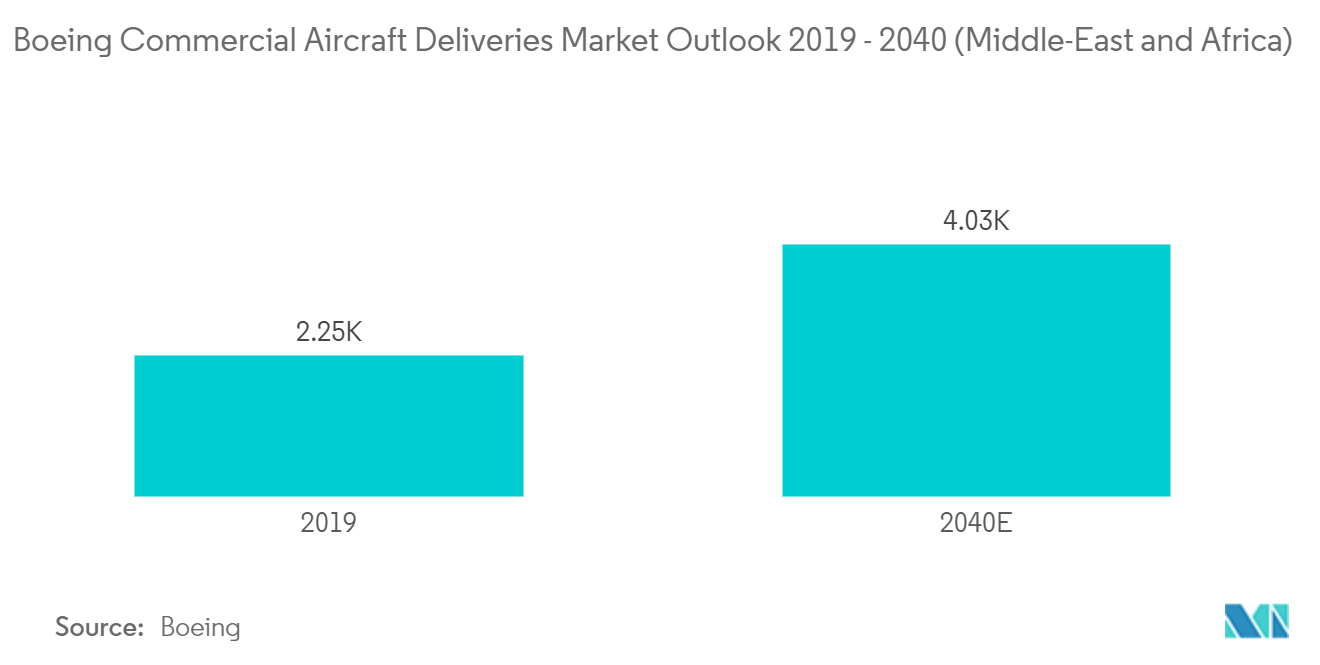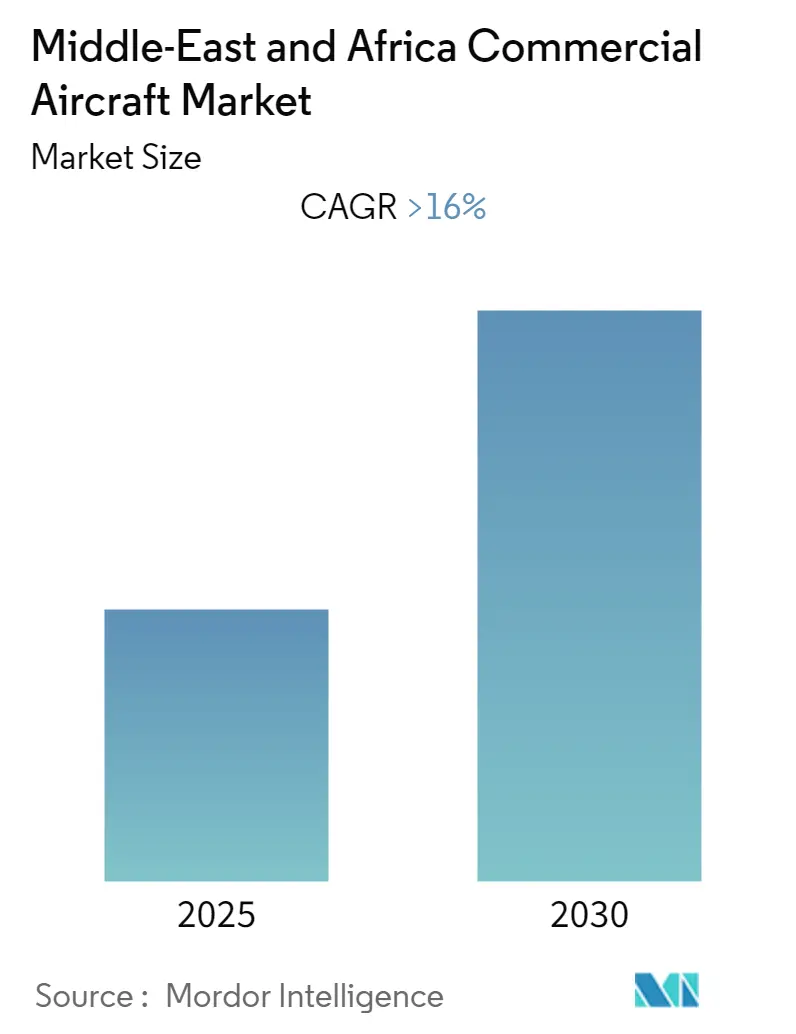
| Study Period | 2019 - 2030 |
| Base Year For Estimation | 2024 |
| Forecast Data Period | 2025 - 2030 |
| Historical Data Period | 2019 - 2023 |
| CAGR | 16.00 % |
| Market Concentration | Medium |
Major Players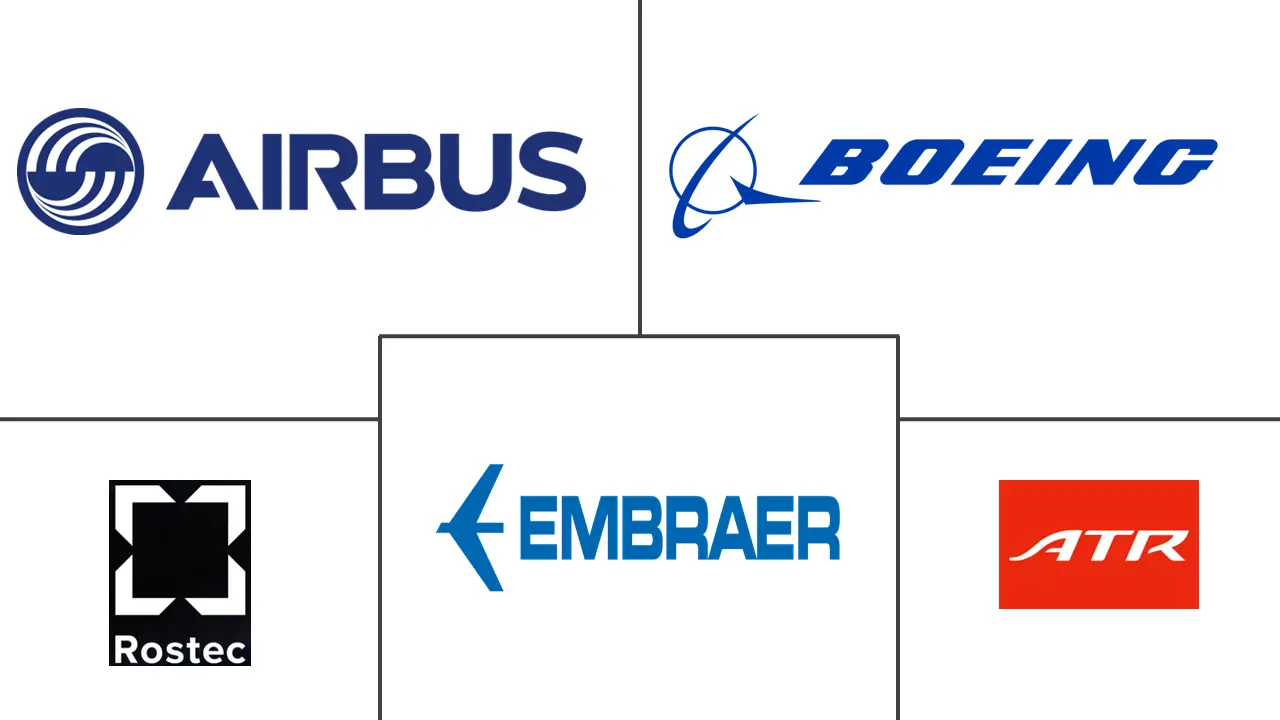
*Disclaimer: Major Players sorted in no particular order |
The MEA Commercial Aircraft Market Analysis
The Middle-East and Africa Commercial Aircraft Market is expected to register a CAGR of greater than 16% during the forecast period.
Despite the impact of the COVID-19 pandemic, several aircraft OEMs started increasing their production rates. They plan to take back aircraft production rates to the pre-COVID-19 levels as early as possible. This is expected to drive the market's growth during the forecast period.
The commercial aircraft market is expected to experience healthy growth in the coming years owing to increasing air passenger traffic, increasing procurement of new aircraft by airlines, and improved economic conditions in several countries across the Middle-East and African region.
The economic downfall due to COVID-19 impacted the growth plans of several existing airlines in Africa. Many of these airlines are not expected to recover within the forecast period. However, the airlines in the Middle East are expected to recover at a rapid pace due to the strong economy of the Middle Eastern region and the governmental support provided.
The MEA Commercial Aircraft Market Trends
The Airline Fleet Expansion Plans is Driving the Market
Aviation passenger traffic increased every year in the last decade. The advent of the COVID-19 pandemic slashed the overall passenger traffic in 2021. However, the market outlook is still positive, as the market expects to witness growth from 2022.
Airlines have already placed several aircraft orders in the last few years to expand their fleet sizes, to cater their services to more passengers, with a positive outlook for the regional and global air passenger traffic numbers, in the past. For instance, in November 2021, Jazeera Airways placed a multi-billion-dollar order with Airbus for 28 single-aisle A320neo family aircraft, including 20 A320neos and eight A321neos. The airline recovered from the pandemic in Q3 2021 with a return to profitability and plans to double its current fleet size to 35 aircraft by 2026.
Furthermore, Qatar Airways expects to take delivery of its first Boeing B777-9 in the second half of 2023 and announced that it was considering ordering the upcoming B777X freighter. The airline was looking to order around 30 cargo aircraft for its fleet renewal program. Qatar's present freight capacity mainly comprises Boeing's aircraft. It flies 25 777-200Fs and two 747-8Fs. The airline has phased out all its remaining A330-200Fs.
The fleet expansion plans of Middle-East and African countries and the existing orders for passenger aircraft by the airlines are expected to drive market growth in the region during the forecast period.
United Arab Emirates is Projected to Exhibit the Largest Market Share in the Market
Dubai Airports revised its passenger traffic forecast for 2021 upwards to 28.7 million (an increase of two million). However, these numbers are still significantly lower than the pre-pandemic levels. Emirates and Etihad are the two major airlines in the United Arab Emirates. Emirates is a state-owned flag carrier airline. It operated a fleet of 255 aircraft, with 195 aircraft on order as of December 2021.
The cargo operations of Emirates in H1 2021 were robust, recording a 39% increase and bringing the business to 90% of the pre-pandemic volume. In this regard, the airline is expanding its freighter aircraft fleet. In November 2021, Emirates Airlines placed a new order with Boeing for two 777 freighters. The aircraft is expected to operate with the airline's SkyCargo division, which currently flies 10 777 freighters.
Etihad Airways is the second-largest airline and the flag carrier of the United Arab Emirates. Etihad Airways operates a fleet of narrow-body and wide-body aircraft from four different aircraft families, i.e., Airbus A320, A350, Boeing 777, and 787 Dreamliner. The company's fleet totals 94 aircraft as of December 2021, with 79 aircraft on order. Furthermore, Etihad is undergoing an organizational transformation as part of its plan to reduce financial losses by 2023. These plans include restructuring its operations by shifting its focus to shorter routes and using narrow-body aircraft.
Such developments and restructuring plans are expected to propel the airlines to expand their fleets, thereby driving the country's growth in the market during the forecast period.
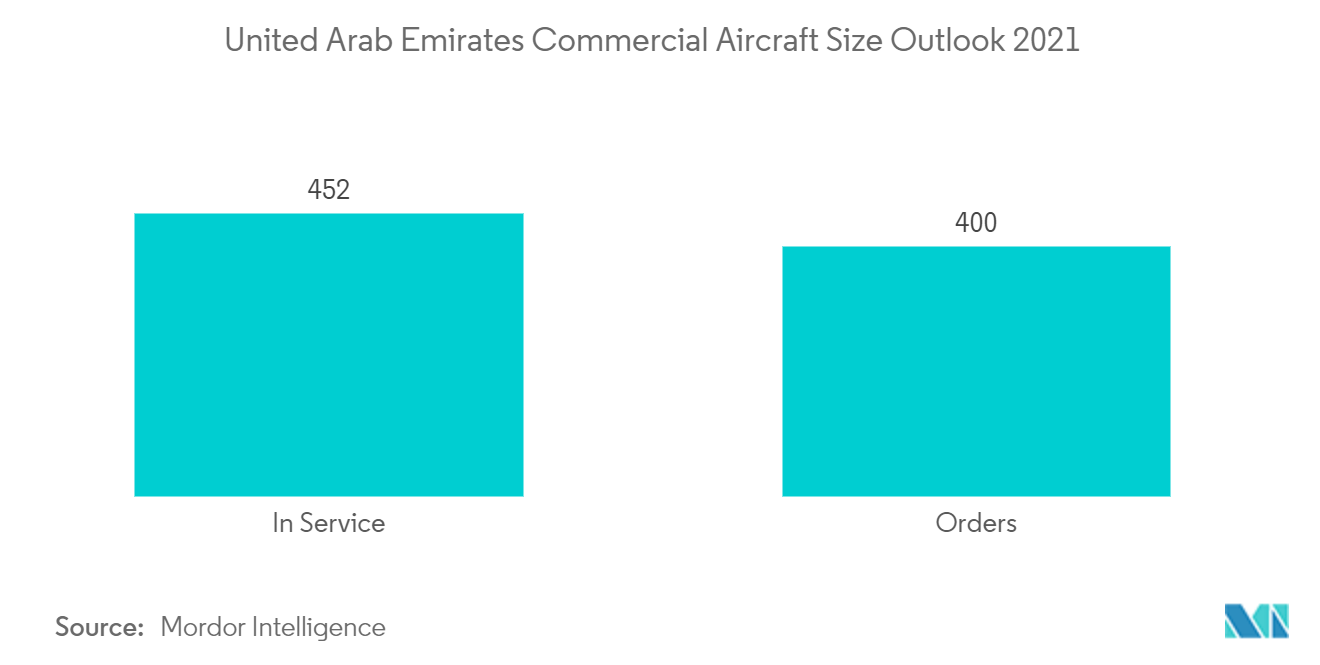
The MEA Commercial Aircraft Industry Overview
The Middle-East and African commercial aircraft market is a highly consolidated market, with prominent players dominating and controlling the industry entirely. Some prominent companies in the Middle-East and African commercial aircraft market are Airbus and The Boeing Company. The aircraft manufacturing industry is shifting toward an electric architecture for various reasons. Reducing aircraft emissions is one of the major driving forces for adopting electrical and hybrid-driven approaches. Electric actuation systems are becoming weight-competitive enough to displace the old hydraulic actuation systems in various aircraft subassemblies. The focus on the futuristic zero-emission commercial aircraft concept is expected to attract several innovations in this regard. Such breakthrough technologies are expected to help the companies gain new contracts and increase their market presence.
The MEA Commercial Aircraft Market Leaders
-
Boeing
-
Airbus
-
Embraer
-
Rostec
-
ATR
-
Commercial Aircraft Corporation of China,Ltd.
-
MITSUBISHI HEAVY INDUSTRIES, LTD.
- *Disclaimer: Major Players sorted in no particular order
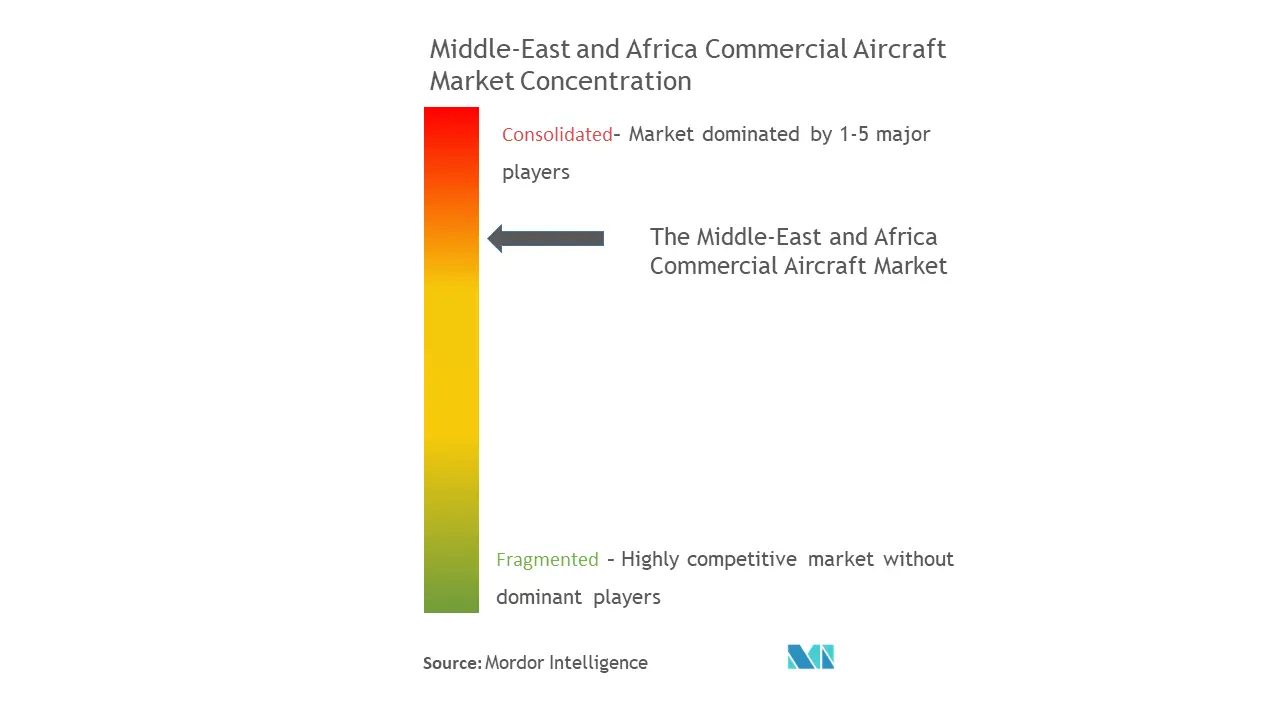
The MEA Commercial Aircraft Market News
In January 2022, Qatar Airways ordered up to 50 large cargo planes and expressed plans to buy up to 50 Boeing 737 Max jets from Boeing.
In February 2022, Abu Dhabi's Etihad Airways signed a letter of intent to order seven Airbus A350 freighter aircraft from Airbus, the European plane maker.
The MEA Commercial Aircraft Industry Segmentation
Commercial aircraft means any aircraft other than public aircraft engaged in the business of transporting property or persons. The Middle-East and African commercial aircraft market is segmented based on aircraft type, application, and geography. By aircraft type, the market is segmented into narrow-body aircraft, wide-body aircraft, and regional aircraft. By engine type, the market is segmented into turbofan and turboprop. By application, the market is segmented into passenger aircraft and freighters. The report also covers the market sizes and forecasts for the market in major countries across Middle-East and African region. The market sizing and forecasts for each segment have been represented based on value (USD million).
| By Aircraft Type | Narrow-body Aircraft |
| Wide-body Aircraft | |
| Regional Aircraft | |
| By Engine Type | Turbofan |
| Turboprop | |
| By Application | Passenger Aircraft |
| Freighter | |
| By Geography | Saudi Arabia |
| United Arab Emirates | |
| Qatar | |
| South Africa | |
| Rest of Middle-East and Africa |
The MEA Commercial Aircraft Market Research FAQs
What is the current Middle-East and Africa Commercial Aircraft Market size?
The Middle-East and Africa Commercial Aircraft Market is projected to register a CAGR of greater than 16% during the forecast period (2025-2030)
Who are the key players in Middle-East and Africa Commercial Aircraft Market?
Boeing, Airbus, Embraer, Rostec, ATR, Commercial Aircraft Corporation of China,Ltd. and MITSUBISHI HEAVY INDUSTRIES, LTD. are the major companies operating in the Middle-East and Africa Commercial Aircraft Market.
What years does this Middle-East and Africa Commercial Aircraft Market cover?
The report covers the Middle-East and Africa Commercial Aircraft Market historical market size for years: 2019, 2020, 2021, 2022, 2023 and 2024. The report also forecasts the Middle-East and Africa Commercial Aircraft Market size for years: 2025, 2026, 2027, 2028, 2029 and 2030.
Our Best Selling Reports
Middle-East and Africa Commercial Aircraft Industry Report
Statistics for the 2025 Middle-East and Africa Commercial Aircraft market share, size and revenue growth rate, created by Mordor Intelligence™ Industry Reports. Middle-East and Africa Commercial Aircraft analysis includes a market forecast outlook for 2025 to 2030 and historical overview. Get a sample of this industry analysis as a free report PDF download.



